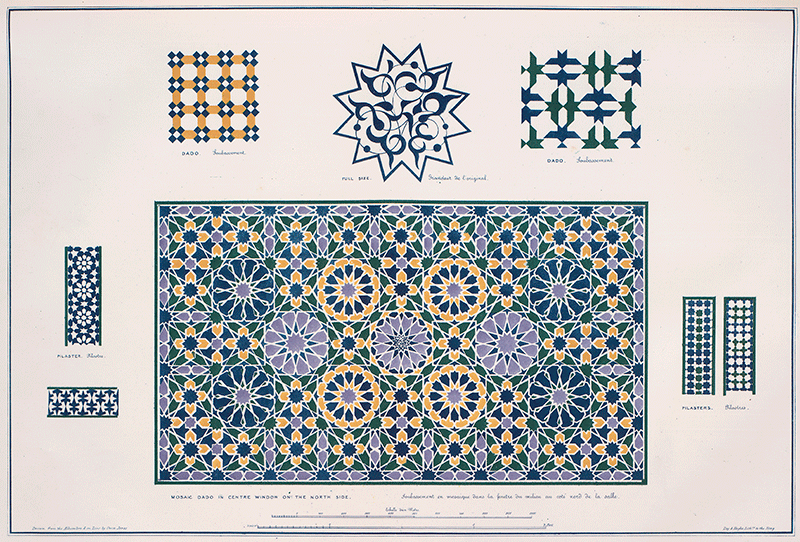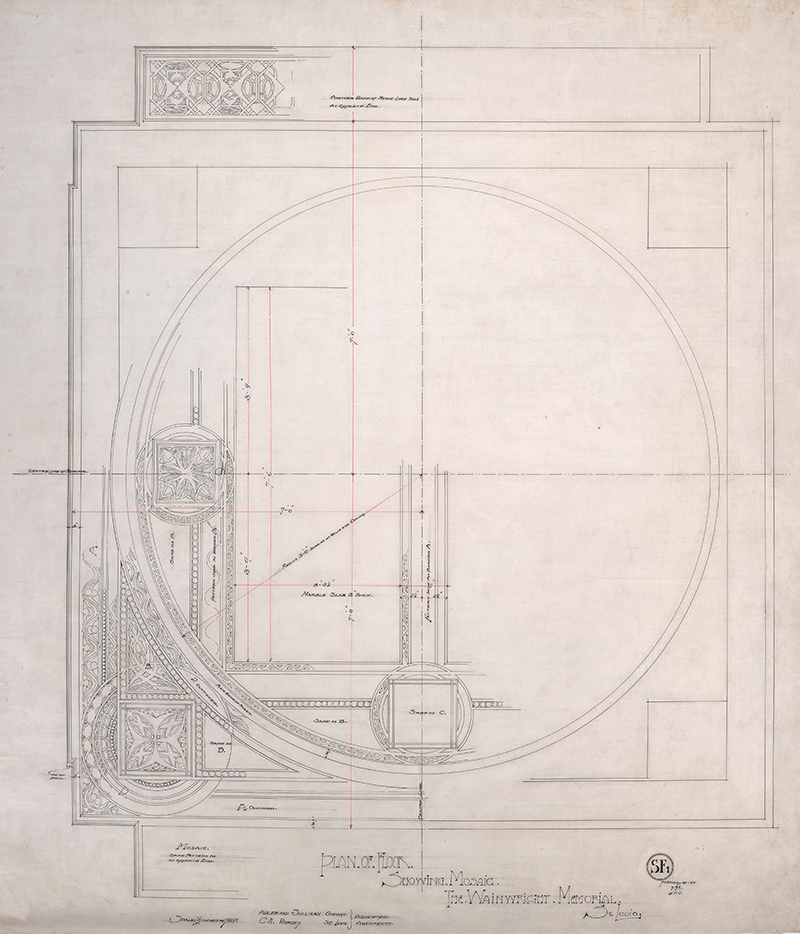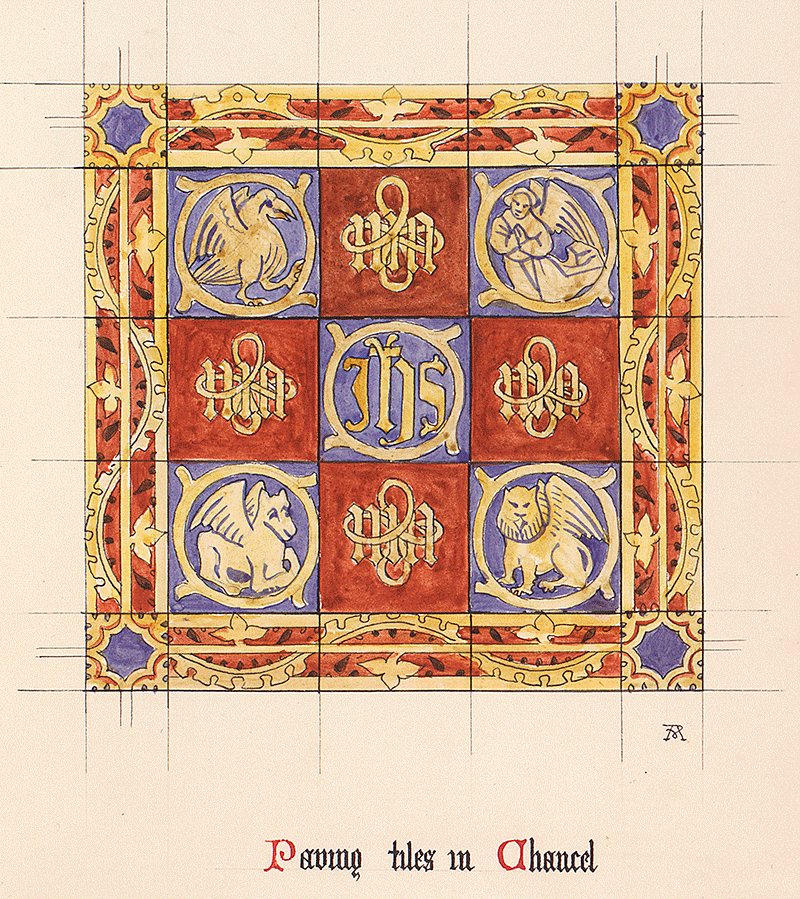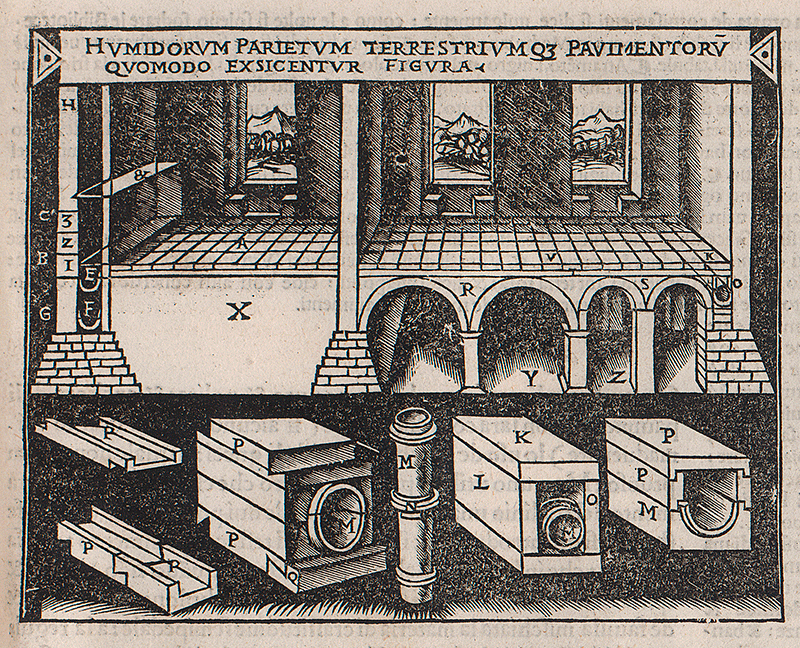Mosaics & Tile
|
-
About this Collection
Glazed or polished ceramic tiles have been used for wall decoration and as pavements since Biblical times.
The art was particularly well developed by Islamic craftsmen, who sometimes covered entire mosque exteriors and mosaics with striking tilework.
This type of decoration was introduced into Europe by the Moors, who ruled southern Spain from the 8th to the 15th centuries. From Spain it spread to Italy, and eventually northward throughout the continent and British Isles.
Mosaics are images, either pictorial or abstract, made from fragments of ceramics, glass, or stone. The walls and floors of ancient Roman and Byzantine structures were often decorated with intricate and beautiful mosaics.
-
Mosaic from the Alhambra's Hall of the Ambassadors
Owen Jones (1809 - 1874) , though a professional architect, is best remembered today as an influential recorder and originator of design patterns. After his apprenticeship in London, he made the Grand Tour of Europe and the Middle East, recording his travels in watercolor. In 1834 he visited Spain, where he was captivated by the Alhambra, the citadel and palace of the rulers of Moorish Spain, built in the 13th and 14th centuries in Granada. Along with his friend Jules Goury, he surveyed the palace and documented its many intricate Moorish decorations. This resulted in the publication of Plans, Elevations, Sections and Details of the Alhambra in 1842. Jones could not find a printer skilled or advanced enough to produce the sumptious publication to his high standards, so he tackled the project himself. These volumes are considered to be the earliest British examples of a fine chromolithographic publication.
Jones became so prominent a designer that he was appointed Superintendent of the Works for London's Great Exhibition in 1851, and subsequently designed historically themed rooms for the Crystal Palace when it was moved in 1854.
-
Floor plan with mosaic of Sullivan's Wainwright Tomb
-
Pugin's design for church tiles, hand-drawn and colored
A design for paving tiles in the Chancel of a Parish Church, hand painted in color inks.
Drawing in A. W. N. Pugin's The Parish Church sketchbook of 1833.
-
Woodcut illustrating wall construction from Steedman's 1521 edition of Vitruvius
Vitruvius' Book Seven addresses interiors, including materials, construction, and decoration. This woodcut illustrates his instructions concerning the correct methods of applying stucco in damp spaces.
 View Image
View Image View Image
View Image View Image
View Image View Image
View Image